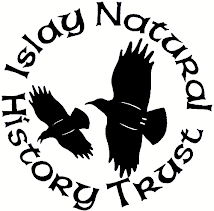

We are fortunate to still have a good population of House sparrows on Islay - the drop in numbers of this species on the mainland is very marked in a lot of areas. The reasons for this are not clear - but they might be linked to our recent love of B&Q - our houses are too well maintained and our gardens too well manicured to afford the Sparrows their idea habitats for living and breeding.
I guess the inference must therefore be that we humans are still suitably scruffy and unkempt here on Islay and the Sparrows still have plenty of good habitat. We put up a Sparrow nest box a few years back - and it has always been ignored which suggests plenty of good natural sites.
Sparrows do seem to be aggressive feeders however - they have taken over our nut cages completely - we started with a good mix of Goldfinches, Greenfinches, Siskins, tits etc, but the only bird that dares threaten the Sparrow hegemony these days is the odd Starling.
Carl











.jpg)





.jpg)













































